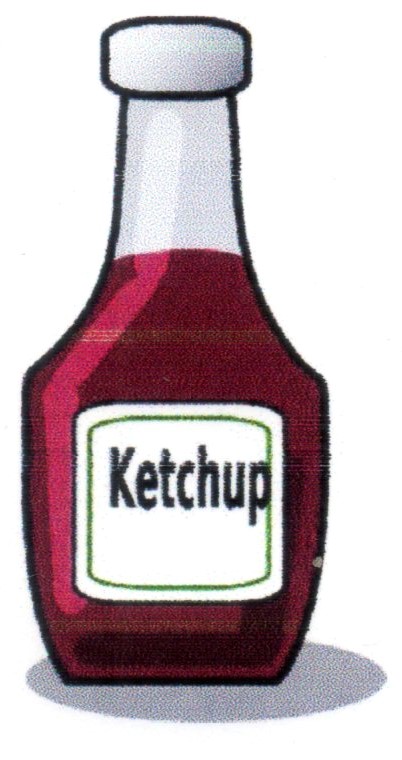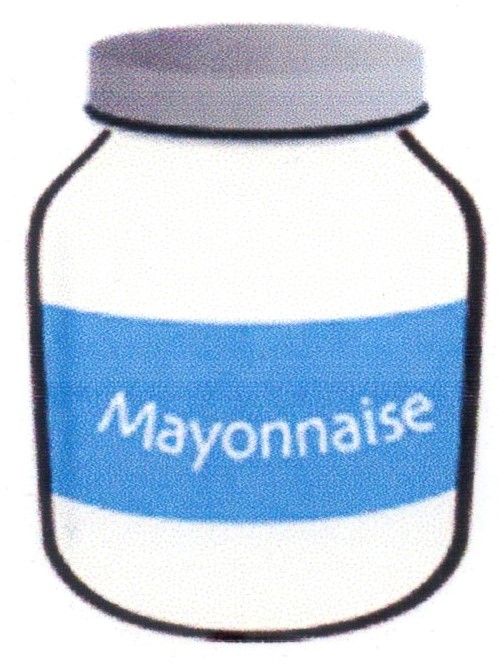 Design your diet
Design your diet
10. Detective work
You don’t have to read Agatha Christie or about Sherlock Holmes to be a detective, but it helps. The only kit you need is a magnifying glass and an enquiring mind that sees the evidence, links the clues and arrives at the solution. You can also have fun with a magnifying glass and bottles of sauce. I’ll bet that you’ve already got the sauces, now find a magnifying glass for some detective work. It is very informative and it’s not information that you’ll find in ‘normal’ diet blogs. BUT, strange though this is, it should gradually begin to make sense as you go along. Be patient.

This is the most important information about 'Design your diet'.
You’ll have to study the evidence hard, as it is not very simple. Sorry!
It is about having a yardstick to measure food energy.
This is what happened to me.
One day I was looking at my sauce bottle whilst I was eating my chips.
I started with Tomato sauce - a - 500ml bottle; that’s a ‘normal’ one.
I was interested to see that the label said that there were 38 servings in the bottle.
I never knew that before.
All sauce bottles have ‘Ingredients’ and then ‘Values’ listed on the labels. They tell you how much Ingredients in 100grams, so as you’d expect, there are a lot of ‘tomato ingredients’ in tomato sauce, but surprise – there is also some celery.
I didn’t know that either.
What is really important is that the label is going to tell you and me about how much sugar, fat, protein and salt is in the sauce, which are the things we like, but which are not always too good - if we overeat them. This where the ‘Values’ come in. In simple terms, it tells you:
How much ‘energy’ in 100grams of sauce.
It tells you in measures of ‘heat’ or ‘Joules’.
DO NOT bother to look this up,
unless you have a degree in higher mathematics.
Luckily, they also tell you the value in calories which are easier to understand – I think?
This means kJ (Joules) and calories
are both telling us the same thing –
How much energy there is in 100grams.
So, Tomato sauce has 435kJ (that’s the Joules bit)
and 102 calories in 100grams.
We can call that 100 calories to make it simple.
Here comes the game
We can use these measures to find out how they compare with other ‘sauces’.
You can forget the Joules bit now (Phew!)
and we’ll just stick with the calories.
The YARDSTICK
This can be our yardstick that we can measure all food by. We know what tomato sauce tastes like. We know how sweet it is and now we have an easy number to remember (100cals in 100grams) when we compare the energy in just about everything that we eat.
Remember: Tomato sauce = 100

To make use of this information take a look at another label on something similar. We can look at ingredients and then at the energy value in something like mayonnaise.
Mayonnaise
This seems to be rather like tomato sauce.
This is what I found by looking at the bottle.
The recipes (ingredients) vary, so I looked at the same brand as the tomato sauce. Obviously, there are no tomatoes, but there is salt 1.0gram, that’s less than in tomato sauce. There is also spirit vinegar and sugar, but the big difference is rape-seed oil 68% and Pasteurised egg yolk (free range) 5%. How much sugar?
This how it usually describes 'sugar'
Carbohydrates 3.0 grams of which sugar 1.5grams.
Surprise!
This is a lot less sugar than in Tomato sauce.
But wait!
The energy value for 100grams is 644calories!
Massively more than tomatoes sauce that had value of 100 calories.
What is the difference? The sugar is low.
Where has the 'energy' come from?
It is mainly in the ‘Fat’, that is - the rape seed oil. When it comes to ‘energy’ that we might store inside us to make us fat, we have been concentrating on sugar, but there is an even bigger culprit waiting in the background and we might call it ‘Fat’. This is why fried food can also be regarded as ‘dangerous’, because it can be covered in cooking oil. The food can absorb the oil, like in crisps. How many fish and chips have you eaten? The fish inside is OK, but what about the rest? It is the batter and the chips fried in oil that are the offenders. Unfortunately, you can do worse than fish. The 'American' battered chicken with 'fries' is no better, but we’ll come to those later.

The real lesson here is that:
Tomato sauce = 100 calories, but
Mayonnaise = 644 calories
Energy value for the same quantity – 100grams.
I definitely did NOT know that!
When I discovered this, I became really interested in 'energy values' in different sauces, so I went exploring, putting my magnifying glass on the sauce labels. Here’s another commonly used 'sauce'. You don’t have to read all of this if you don’t want to, just get the message that some of the sauces that we add on our food varies hugely in it energy and we should know that.
French dressing (type) 250ml bottle
This is a thinner dressing in a thinner, smaller bottle. You can get it in various flavours, Honey and Mustard, Garlic Dressing etc. The first ingredient was Water. This is important, as the ingredients are listed in order of how much there is in the recipe for the product. Next ingredients, White wine vinegar 12% and sugar 2%. The other things were what you might expect, mustard, flour, rape seed oil. This last one will increase the ‘fat’ content to 2.4 grams.
Values: The calories at 103 was almost the same as Tomato sauce 102.
As I explained above
This can come from sugar which is always listed like this:
Carbohydrates 19.7grams, of which sugar 18.7gms
It's also from the ‘fat’ in the rape seed oil.
These numbers for Tomato sauce were:
Carbohydrates 23.2 of which sugar 22.8.
That’s quite a bit of sugar in tomato sauce.
These are the basic, important numbers when looking at sauces, because most of them are going to be based on some really ordinary ingredients that we have met before – salt and vinegar. Vinegar isn’t really fattening, but sugar is, so it’s useful to know How much sugar is in each sauce. And with some sauces, How much fat (oil)? There will almost always be some salt. Tomato sauce had 1.8grams of salt which is quite high.
I had learned quite a bit from just looking at sauce bottles - so much so that I went diving into my cupboards to check out some other sauces. I'll tell you what I found in the next episode, because it was more than just energy, it was ingredients too.
Walking.
Did you discover the words to the song I mentioned last time?
What good is sitting alone in your room?
If you spend too much time inside, watching TV or sitting too long, you won't be getting the exercise you need. Your mind needs exercising too, by talking to other people. These are some of the words. Could they apply to you?
What good is sitting alone in your room?
Come hear the music play
Life is a Cabaret old chum,
Come to the Cabaret …
The words come from the musical Cabaret by John Kander
There are some interesting people out there wanting to talk and they would talk to you, if you talked to them. Many are walking their dogs – just choose the dog to enquire about - by looking at its owner.
Is your life a cabaret?
Do you sit alone in your room?
Get up and go outside for a walk.
